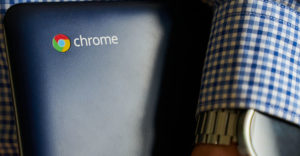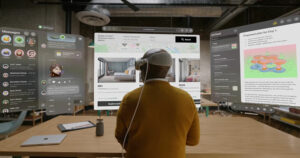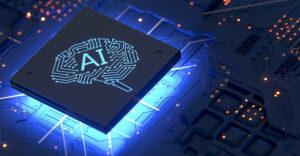
Microsoft began its Windows 8 publicity blitz in earnest Wednesday, previewing an operating system that appears to break from the norm in more ways than one.
It has a tile interface similar to that of Windows Phone 7, it will run on PCs and tablets, and it will support both touchscreen and mouse-and-keyboard interactions.
Further, developers will be able to use common Web technologies such as HTML 5 and JavaScript to create Windows 8 apps.
The upcoming version of Windows represents a fundamental change in the OS’s design that Redmond hasn’t attempted since the launch of Windows 95, said Mike Angiulo, a Microsoft corporate vice president, during a Windows 8 presentation at the Computex conference in Taipei.
The new UI has apparently been well received.
“It looks like the user interface is a winner, building on the differentiated and well-received Windows Phone 7 UI, except with bigger and richer tiles,” Al Hilwa, a program director at IDC, told TechNewsWorld.
“Feedback from everybody I’ve talked to is very good, and the only downside is folks would like to see Windows 8 this year instead of in 2012,” Rob Enderle, principal analyst at the Enderle Group, told TechNewsWorld.
Microsoft declined to provide further comment on Windows 8, with spokesperson Jackie Lawrence pointing TechNewsWorld to the company’s website for published information relating to the new OS.
What We Know About Windows 8
To publicize Windows 8, Microsoft held a briefing on the OS at the D9 Conference and hosted an unveiling at Computex on Wednesday.
Like Sun’s Solaris OS, Windows 8 is aimed at scaling from touch-only small screens through to large screens, Microsoft said. Unlike Solaris, however, Windows 8 can be accessed either through touchscreens or through a keyboard and mouse.
“The big UI change is to make it work seamlessly between tablets and PCs, and it seems to anticipate that most PCs will be touch,” Enderle remarked. “Clearly Microsoft is trying to get ahead of where Apple is going,” he added.
Internet Explorer 10 will be bundled with Windows 8. It will be hardware-accelerated and fully touch-optimized.
Windows 8 will offer fast launching of apps from a tile-based “Start” screen. It will replace the familiar Windows Start menu with a customizable, scalable full-screen view of apps.
The new OS will support two kinds of applications: regular Windows apps and apps written in HTML 5 or JavaScript, which will more closely resemble mobile apps.
More on Win 8 Apps
The live tiles will feature notifications, meaning they will always show up-to-date information from a user’s apps.
Users will be able to switch easily between apps that are running; they can snap and resize an app to the side of the screen.
Windows 8 apps will be able to use a broad set of new libraries and controls designed for fluid interaction and seamless connectivity, Microsoft stated.
Apps written for Windows 8 will be able to add new capabilities to the OS as well as to other apps through the new interface, Microsoft said.
The fact that Windows 8 targets both desktops and tablets may leave some software developers wondering if they’ll be able to address both types of devices with the same app or if they’ll have to write two versions.
“I would expect that, to be successful, most apps would need to be addressable both ways,” IDC’s Hilwa said. “How Microsoft handles that with as common a set of APIs as possible is the key development challenge.”
Developers can learn about building apps for Windows 8 at BUILD, Microsoft’s new developer conference, to be held in Anaheim, Calif., Sept. 13 to 16. Microsoft has opened registration for the conference.
Compatibility With Legacy Stuff
It’s not quite clear whether Windows 7 apps will run smoothly on Windows 8.
Microsoft says it sees easy movement between existing Windows programs and Windows 8 apps, and that the full capabilities of Windows will continue to be available to users. This includes the Windows Explorer and Desktop, as well as compatibility with all Windows 7 logo PCs, software and peripherals.
“It looks like the UI has been rearchitected so it prefers touch in many cases, at least for navigation in apps,” Enderle pointed out. “Legacy apps will be using the old interface, and that will be a bit jarring until they’re updated, but that always happens when you change the interface.”
Will There Be a User Backlash?
With the new UI, Microsoft is working toward a user experience “that’s much more akin to the Apple iPad,” Charles King, principal analyst at Pund-IT, told TechNewsWorld.
This “could indicate that Microsoft’s rethinking how its customers are supposed to interact with computers.”
Could the new UI spark a backlash from users who are already familiar with the existing Microsoft UI?
“We’ve seen Microsoft do this in the past — Windows XP was a radical shift from Windows 98 in terms of the UI, and the last couple of versions of Microsoft Office moved from traditional pulldown menus to ribbon menus,” King pointed out.
“The real question is, is the value of moving to this new model of user interaction going to be worth it to the end user?” King stated.






















































This seems more of an app on top of windows with tiles and a split screen and not such a radical rethink – think windows media center on windows xp, an application what runs on top: runs with a remote and shows all your photos or you can close it and use windows normally.